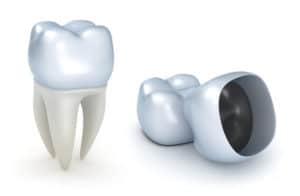 Dental crowns are common, and with today’s advanced materials, you might never notice if someone you know has one. Yet, despite their popularity, many patients are not sure if they really need one, or exactly how dental crowns work to improve their smiles. The truth is that dental crowns serve several purposes, depending on your specific needs. Whether your tooth is damaged, cosmetically blemished, lost, or needs to be extracted, a dental crown may offer the ideal solution.
Dental crowns are common, and with today’s advanced materials, you might never notice if someone you know has one. Yet, despite their popularity, many patients are not sure if they really need one, or exactly how dental crowns work to improve their smiles. The truth is that dental crowns serve several purposes, depending on your specific needs. Whether your tooth is damaged, cosmetically blemished, lost, or needs to be extracted, a dental crown may offer the ideal solution.
When a Tooth Needs Repair
Dental crowns are designed to look like the teeth they restore, and are bonded securely over the teeth, completely covering their visible portions. When a tooth is chipped, cracked, fractured, or broken, a dental crown can stop the damage from growing worse and protect the tooth so it can continue to work properly.
When a Tooth Needs Improvement
A minor chip in a tooth’s surface, or a particularly stubborn stain or discoloration, can often be corrected by placing a lifelike dental crown over the tooth. The porcelain that many crowns are made from is designed to naturally mimic the color, shade, and light-reflecting properties of healthy, natural tooth structure. As a cosmetic improvement, a dental crown can effectively restore your tooth’s healthy, youthful, blemish-free appearance.
When a Tooth Needs Replacement
Because of their ability to replicate your natural teeth, dental crowns are increasingly being used to replace lost teeth in lieu of conventional dental bridges. Unlike a bridge, which is supported by crowns attached to surrounding healthy teeth, your dentist may suggest a dental implant topped with a lifelike crown. The implant serves a replacement for the lost tooth’s root, and the crown restores the tooth’s visible portion above the gum line.



